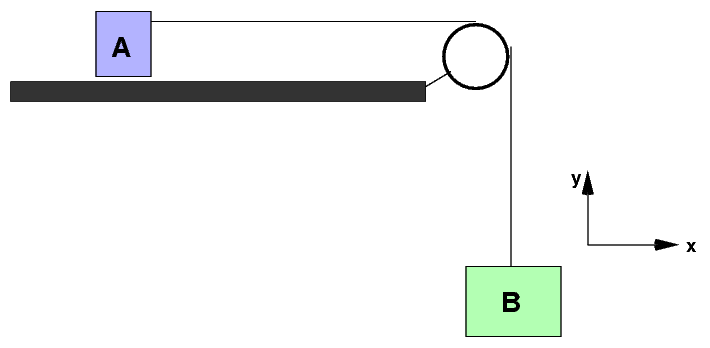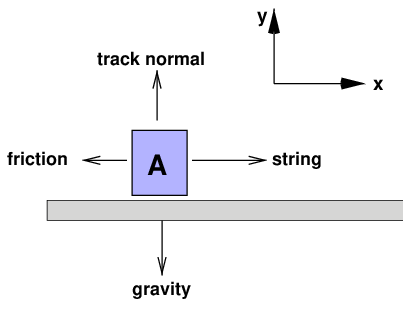
 Copyright © Michael Richmond.
This work is licensed under a Creative Commons License.
Copyright © Michael Richmond.
This work is licensed under a Creative Commons License.
Consider the modified Atwood's machine:

Two masses (cart mA, hanging block mB) are connected by an ideal string passing over an ideal pulley, as shown. Note that an "ideal string" has the same tension force T everywhere along its length, but that force pulls
This time, let's include a friction force on the cart. Fill in the table at right with all the forces acting on the cart.

force x y
-------------------------------
gravity 0 -mA * g
track normal 0 +Fn
string +T 0
friction -Ff 0
-------------------------------
total mA * ax mA * ay = 0
Now, please write out expressions for the forces acting on the weight.

force x y
-------------------------------
gravity 0 -mB * g
string 0 +T
-------------------------------
total mB * ax = 0 -mB * ay
We end up two equations, one for the cart and one for the weight. The key to solving them is to realize that the acceleration of the cart in x, ax, is the same as the acceleration of the weight in y, ay. We can simply replace them both with the single variable a.

This yields two equations with several unknowns. We can eliminate one unknown, the tension, by solving for it in the cart equation

and substituting it into the weight equation

Now, in class, we MEASURED the acceleration of the cart, so we know its value. That means that we can solve for the force of friction.

 Copyright © Michael Richmond.
This work is licensed under a Creative Commons License.
Copyright © Michael Richmond.
This work is licensed under a Creative Commons License.